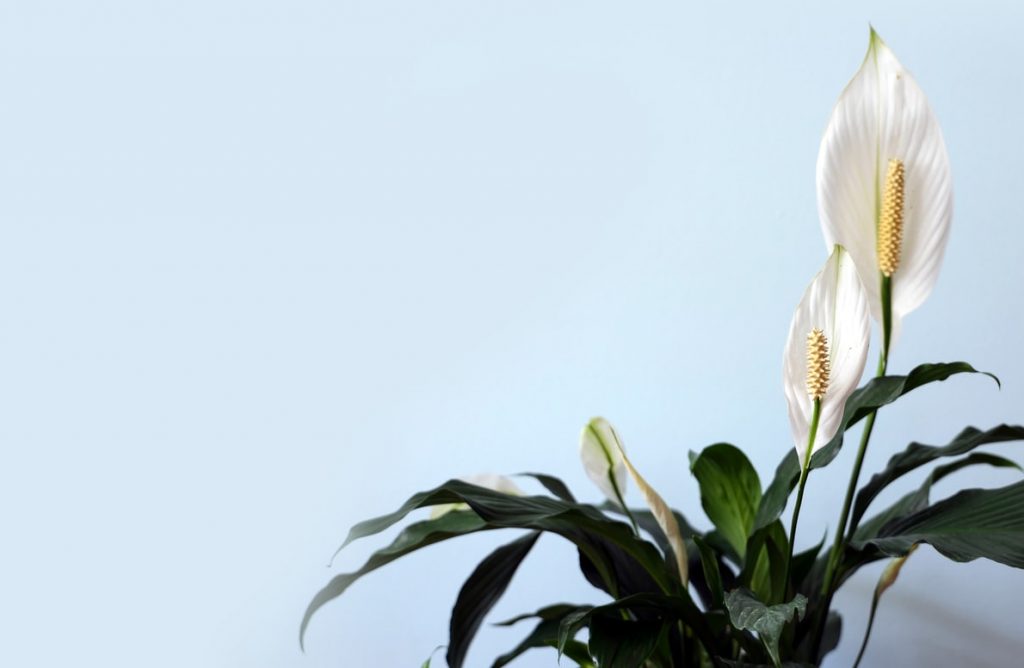Peace lilies are an easy houseplant to grow, bringing life and luster to an office or home while cleaning the air. However, while peace lilies are easy to grow and don’t need a lot of light, proper growing conditions are still important. Now let’s take a look at the planting and nursing of a peace lily.
About the Peace Lily
Peace lilies are tropical evergreen plants that can thrive on the forest floor, where they receive indirect light and constant moisture. For peace lilies grown indoors to thrive, we also need to provide them with enough light to successfully produce white to off-white flowers starting in early summer and flowering all year-round under the right conditions.
It is important to note that peace lilies are not hardy, so they can only be grown in warm and humid climates.
Peace Lily Cultivation
Light
Peace lilies can thrive in cool or poorly lit Spaces and can even tolerate fluorescent light, but be careful to keep the plant out of the afternoon sun.
Temperature and Humidity
Peace lilies prefer 65-80 degrees Fahrenheit temperatures and high humidity. Therefore, we can spray the leaves to increase the humidity around the plant, but it is important to be careful that we need to protect the peace lily from harmful effects caused by drastic changes in airflow or temperature, so do not place the peace lily near the door opening to the cold winter air.
Fertilization
Peace lilies need a lot of nutrients in the summer, so it’s best to treat them with organic houseplant fertilizer every week to help them bloom. Secondly, start to reduce the amount of fertilizer applied in spring and autumn, and there is no need to fertilize peace lily in winter.
Watering
Peace lilies prefer to water a lot at once but don’t like to overwater, so remember to wait for the top of the soil to dry out before watering again, but be careful not to let the soil dry out completely.
In addition, peace lilies are sensitive to chemicals, which can cause the leaves to turn brown. If the water in your home contains a lot of chlorine, let it sit overnight before giving it to plants.
Soil
Peace lilies are prone to root rot, so rich, loose potting soil rich in organic matter is needed, as is choosing a well-drained container to prevent the plant from wilting.
Cleaning
Washing or wiping the leaves will help peace lilies get better sunlight. Washing plants can be done by taking a short shower or wiping the leaves with a damp cloth, but care should be taken to avoid clogging the plant’s pores.
Peace Lily Transplantation
When the plant exceeds the capacity of the pot, peace lily needs to be divided and transplanted, and the specific operations are as follows:
- Take the whole plant out of the container and divide it into smaller plants, making sure to leave a few leaves on each clump.
- Fill new, well-drained containers with fresh, high-quality potting soil that is moist but not soggy.
- Immediately plant the cut plants in a container and water them thoroughly.
- Place small plants in a warm, well-lit area.
Problem Solving
Peace Lily usually encounters few problems, but in fact, there are still some potential problems, the specific solutions are as follows:
- Brown tips are usually caused by too much light, too much fertilizer, or lack of water and low humidity. Placing plants on damp gravel trays or aerosolizing leaves helps increase humidity.
- Yellow leaves can be caused by overwatering, underwater or aging.
- For pests, wipe the leaves and spray with insecticidal soap.
- Fungus gnats love to grow in moist compost, so they need to break their life cycle by minimizing watering.
- Peace lilies are mildly toxic to animals and humans, so keep away from children and pets, and wash your hands after handling them to avoid irritation.

